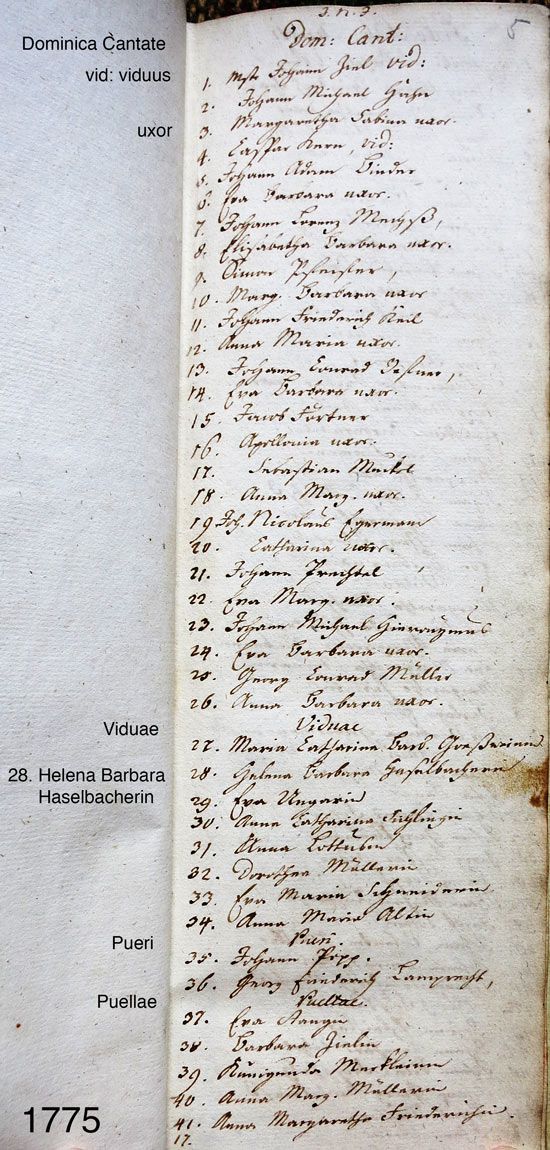Sample List with Hasselbacher Name
First List from 1775.

This first page of Volume K22 provides a good example of the layout of a communicant list for a given Sunday as well some of the conventions used throughout. The name of the Sundays and major abbreviations are written in Latin. A colon after a partial Latin word indicates that an abbreviation is being used. Thus, the first entry is for Dominica Cantate or Cantate Sunday. The first section of names includes widowers (as in #1, vid = viduus or widower) and married couples. The name of the husband is given first, followed by the given names of the wife and the Latin word “uxor” or wife as in the pair #s 2 & 3. Interestingly, the Latin words and abbreviations are written in Latin script compared to the use of German script for the names. For example, compare the Latin letter ‘u’ in Viduae and Pueri to the German ‘u’ with its u-bogen or u-hook above the letter as in #32 Dorothea Muller(in).
The remaining sections of names are Viduae (widows), Pueri (boys or young men) and Puellae (girls). I am willing to have my amateurish interpretation of Latin corrected. For example, although a dictionary will give the translation as “boys and girls,” I suspect that unmarried communicants of any age were included in these last two categories including an unmarried Balthasar Haselbacher who was 23 in later lists. Additional evidence supporting this conclusion is that all the names in the first sections are either widowers or pairs of married couples.
Note that name Number 28 is that of Peter’s mother, Helena Barbara Haselbacher(in). The “in” is some sort of archaic grammatical suffix that I do not fully understand. Note also that our name is spelled here with a single ‘s’. Compare the single ‘s’ in Haselbacher with the ‘ß’ or ettsett in #27 Maria Catharina Barb(ara) Greßerin(in). A single ‘s’ was used to spell Haselbacher throughout in the lists of communicants I looked at.
In only 16 Sundays, festival days, and saint's days of the first full ecclesiastical year beginning with Dom. Canti, were parishioners counted. Among these were the names of four Hasselbachers: Helena Barbara, Georg Conrad, Johann Balthasar, and Peter. Of course there were many more Sundays in the year, but my initial impression is that the Haselbachers were irregular church-goers at best and did not customarily go to church together on any given Sunday during the interval I examined. I provide a list on another page of the individual Sundays included, the Haselbachers who attended, and the total number of parishioners counted.
List of Communicants: First Page.
Next Page: Sample List of Communicants.
Discussion of Significance of Findings.
Other Lists.
Table of Sundays Counted.
Confirmations.
Back to Hazelbaker Home Page.
